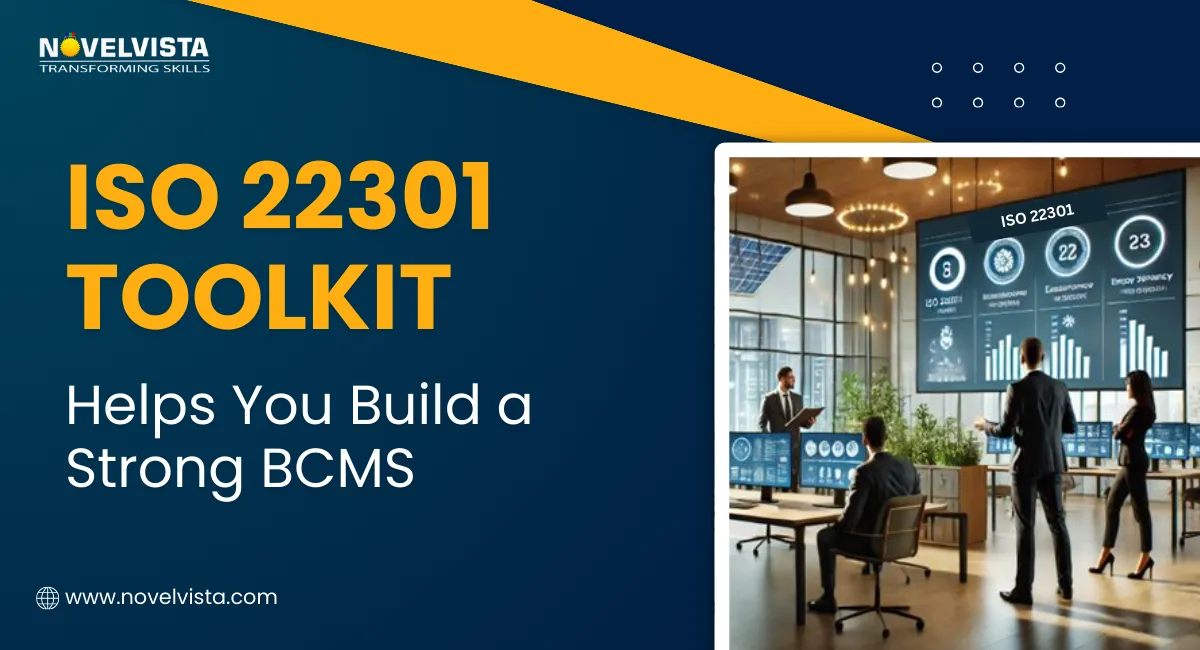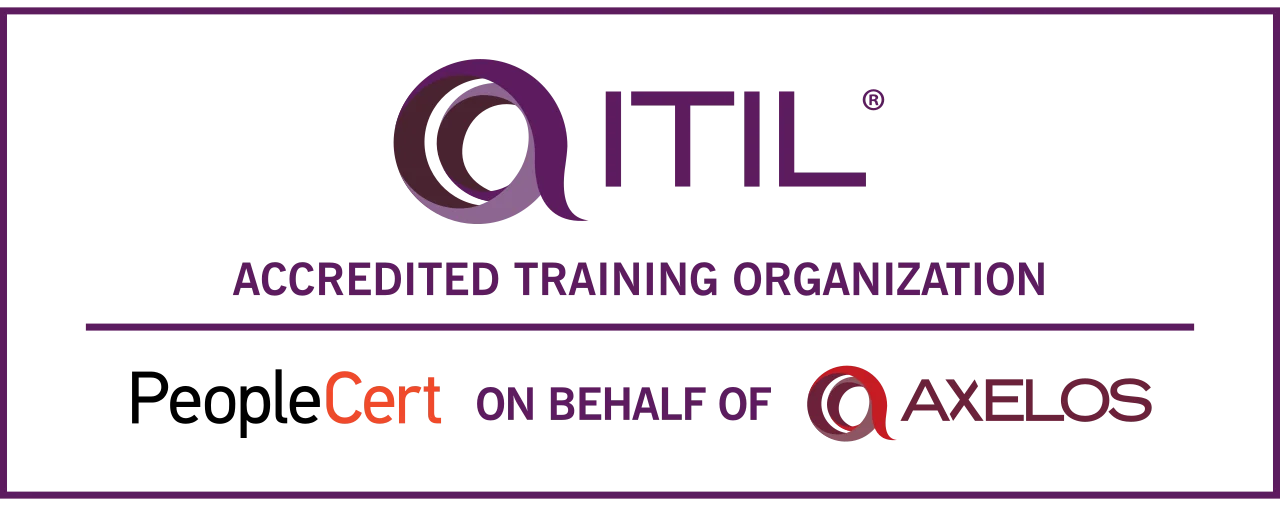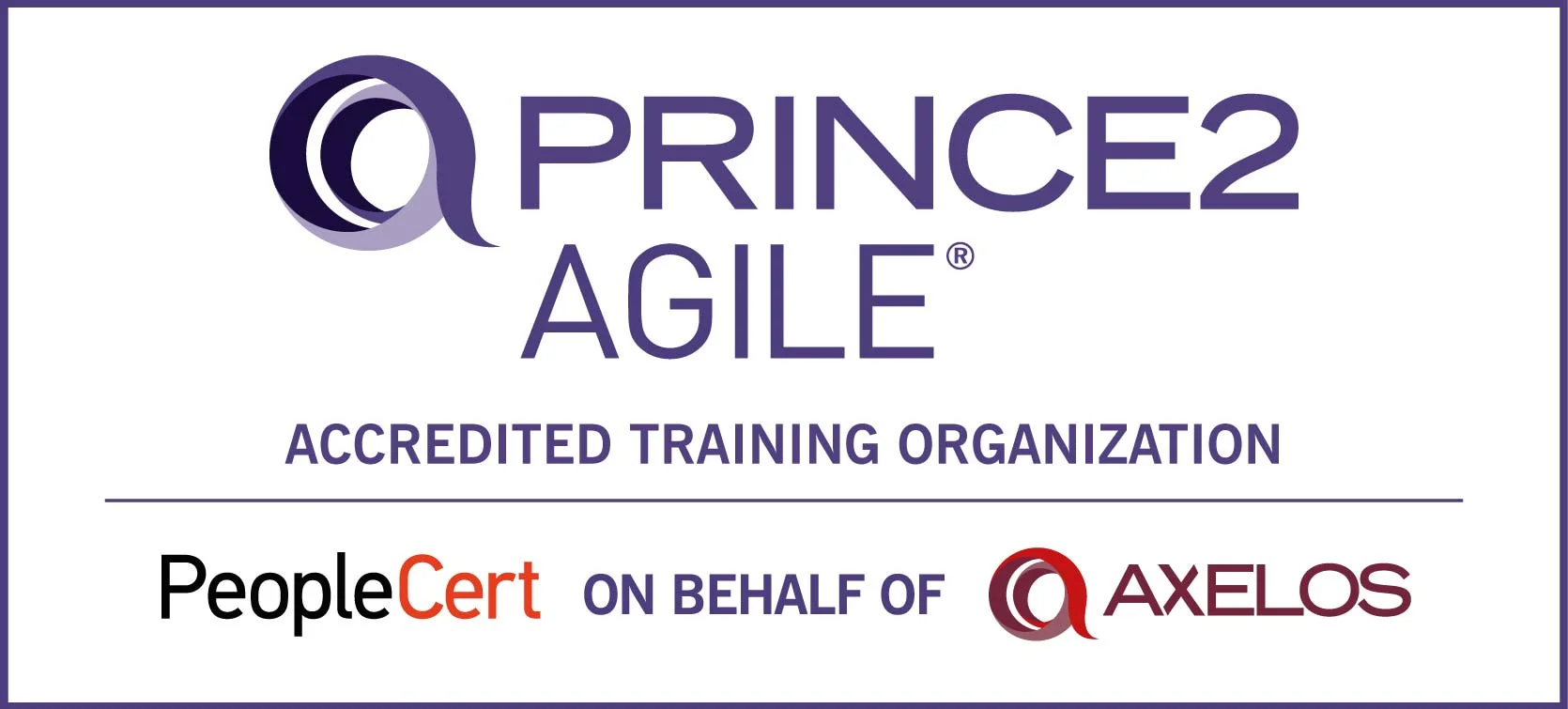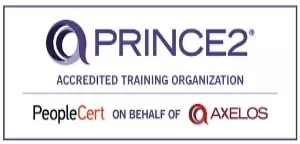- ISO 31000 Risk Manager Certification Overview
- ISO 31000 Certification Cost Breakdown
- Factors Influencing ISO 31000 Certification Cost
- Cost Comparison with Other ISO Certifications
- Hidden Costs to Consider
- Budgeting Tips for ISO 31000 Certification
- How NovelVista Can Help You
- Our Suggestion: Take the Right Steps Toward Certification
- Return on Investment (ROI)
- Conclusion: ISO 31000 Certification Cost
As the business world becomes increasingly complex and interconnected, the need for effective risk management has never been more important. ISO 31000 provides organizations with a global standard for managing risks, ensuring they’re prepared for unforeseen challenges. With the rise of regulatory demands and the focus on building resilience, more professionals and organizations are seeking ISO 31000 certification to build comprehensive risk management frameworks.
However, while the benefits of ISO 31000 certification are clear, many professionals and businesses face budgeting challenges when planning for this certification. It’s crucial to understand the full cost structure to make informed decisions. This blog will provide a clear breakdown of the ISO 31000 Certification Cost in India and globally, what to expect, and how to strategically budget for it.
ISO 31000 Risk Manager Certification Overview
ISO 31000 is a comprehensive framework designed to guide organizations in the identification, assessment, and management of risks. The ISO 31000 Risk Manager certification ensures professionals are equipped to handle the complexities of risk management, focusing on the entire risk management lifecycle.
Key Benefits of ISO 31000 Certification:
- Global Recognition: ISO 31000 is recognized worldwide, making it a valuable asset for individuals and organizations alike.
- Improved Risk Management: Certification enhances your ability to manage and mitigate risks effectively, increasing organizational resilience.
- Career Advancement: Professionals with ISO 31000 certification stand out, opening doors to senior roles in risk management and governance.
- Organizational Benefits: Helps organizations implement better risk management practices, ensuring compliance and operational efficiency.
ISO 31000 Certification Cost Breakdown
Training and Certification Fee:
India:
- The ISO 31000 Certification Cost in India is ₹45,000 (approx).
Globally:
- The cost of ISO 31000 certification typically ranges around $560 globally, which is approximately ₹45,000 INR.
Additional Costs:
- Study Materials (Optional):
- While some training providers include study materials, others offer them separately. Expect to pay around ₹4,000–₹7,000 for official study guides and other resources.
- While some training providers include study materials, others offer them separately. Expect to pay around ₹4,000–₹7,000 for official study guides and other resources.
- Travel and Accommodation (if applicable):
- For in-person training, especially if it’s outside your city, travel and accommodation costs may add up, depending on the location of the training provider. For example, airfare and hotel expenses can increase the total cost significantly, typically ₹5,000–₹15,000.
- For in-person training, especially if it’s outside your city, travel and accommodation costs may add up, depending on the location of the training provider. For example, airfare and hotel expenses can increase the total cost significantly, typically ₹5,000–₹15,000.
- Recertification Fees:
- ISO 31000 certification is valid for three years. Post this period, recertification is required, which may come with additional costs based on the provider’s fees.
Factors Influencing ISO 31000 Certification Cost
Several factors can affect the overall ISO 31000 Certification Cost. It’s essential to understand these factors so that you can plan your budget effectively.
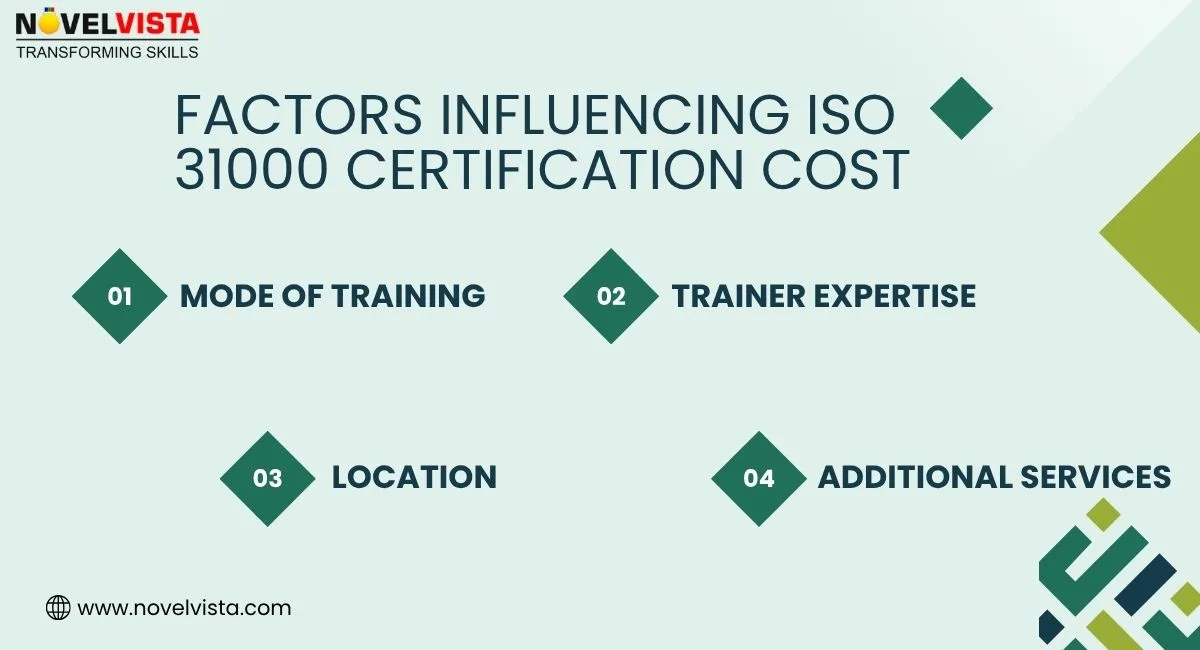
Mode of Training:
- Online vs. In-Person:
- Online courses are usually more affordable compared to in-person sessions. Expect online ISO 31000 certification programs to be priced between ₹30,000 to ₹50,000, while in-person training can cost ₹45,000 to ₹60,000.
- For instance, an online training program might cost around ₹45,000 in India, while a two-day in-person course could run up to ₹60,000.
- Online courses are usually more affordable compared to in-person sessions. Expect online ISO 31000 certification programs to be priced between ₹30,000 to ₹50,000, while in-person training can cost ₹45,000 to ₹60,000.
Trainer Expertise:
- Trainers with extensive industry experience or certifications often command higher fees for their courses. This premium pricing is justified by the added value of their real-world expertise, which can benefit learners in practical scenarios.
- Experienced trainers may charge ₹5,000–₹10,000 more than average trainers for the same certification.
Location:
- Costs may vary significantly depending on where you’re taking the course. Metropolitan cities like Delhi, Mumbai, or Bengaluru tend to have higher fees due to the demand for specialized risk management training.
- For example, courses in Bengaluru or Mumbai might cost slightly more than those in smaller cities due to higher overhead costs.
Additional Services:
- Many training providers offer additional services such as mock tests, workshops, or practice exams, which can add to the overall ISO 31000 Certification Cost.
- Expect to pay around ₹5,000–₹10,000 for these added resources to ensure you’re fully prepared for the exam.
Cost Comparison with Other ISO Certifications
ISO certifications are critical for organizations, and ISO 31000 offers a highly cost-effective option compared to other well-known ISO certifications.
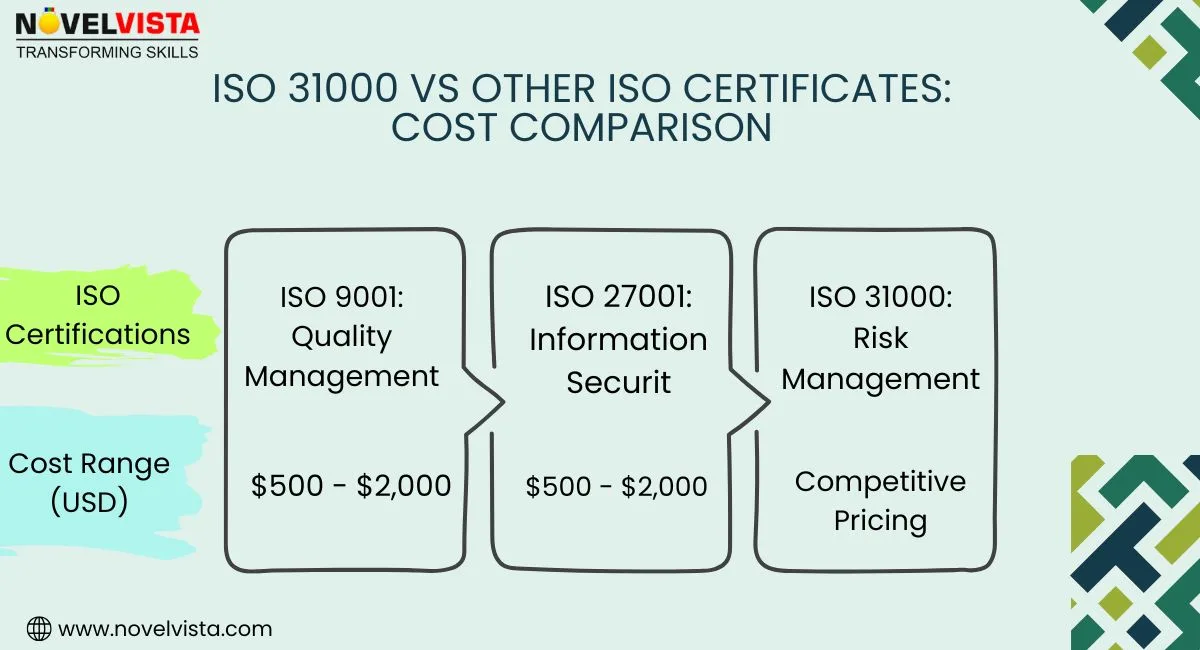
ISO 9001: Quality Management System
- Certification costs can range from $500 to $2,000, depending on the provider, training format, and location.
ISO 27001: Information Security Management
- Similarly, the cost for ISO 27001 certification can range from $500 to $2,000, reflecting the complexity and demand for security certifications.
ISO 31000: Risk Management
- ISO 31000 certification provides competitive pricing while offering great value for organizations focusing on risk management. Compared to ISO 9001 and ISO 27001, ISO 31000 remains relatively affordable yet highly impactful in addressing risk management needs.
Hidden Costs to Consider
While the initial certification cost is clear, there are often hidden expenses that organizations and individuals may overlook when budgeting for ISO 31000 certification. Being aware of these costs ensures that you have a complete understanding of the financial commitment involved.
Software and Tools:
Implementing risk management software is an essential component of the ISO 31000 framework. These tools help in identifying, analyzing, and monitoring risks systematically, which can significantly enhance the ISO 31000 certification process.
- Cost: Expect to invest anywhere from ₹15,000 to ₹50,000 annually, depending on the complexity and scale of the tools your organization chooses to integrate.
Employee Time and Resources:
The time and effort required for training, audits, and meetings can be significant. Employees will need to spend considerable time on audits, assessments, and implementing the framework, which can affect productivity.
- Cost Impact: Internal employee time spent on this can translate to opportunity costs, especially if employees are working in addition to their regular responsibilities.
Ongoing Maintenance Costs:
Maintaining ISO 31000 certification requires continued adherence to the framework and regular updates to reflect evolving industry standards. Annual fees, internal audits, and periodic reviews of the system add to the cost burden.
Annual Maintenance Fee: Around ₹5,000–₹15,000 for ongoing training and system upkeep.Budgeting Tips for ISO 31000 Certification
Now that we have a comprehensive breakdown of the costs, here are some strategic tips to manage your ISO 31000 certification budget efficiently.
Early Enrollment:
Many training providers offer discounted rates for early sign-ups. Planning ahead and enrolling in training programs early can help you save on costs while ensuring ample time to prepare for the exam.
Tip: Keep an eye on discounts or special offers, particularly for corporate training programs.
Group Training:
If you represent a business or organization, consider enrolling multiple employees in a group training program. Bulk training often comes with discounted pricing and can be more cost-effective for larger teams.
Tip: Check with your training provider about group rates for training sessions.
Financial Planning:
Be sure to factor in study materials, travel, study tools, and hidden costs when setting aside funds for certification. Proper financial planning ensures there are no surprises when the final costs come up.
Tip: Create a detailed budget that includes all potential costs from training to recertification.
How NovelVista Can Help You
ISO 31000 certification is a powerful tool for professionals looking to establish themselves in the risk management field. NovelVista is your trusted partner in this journey, offering a range of services to ensure you achieve certification success.
Comprehensive Training Programs:
We offer ISO 31000 Risk Management training designed for professionals across various industries. Our courses align with international standards and cover everything you need to know to gain certification.
Expert Instructors:
Learn from seasoned professionals with industry experience who bring real-world insights into the training sessions. This ensures you’re not just prepared for the exam, but also for practical application in the workplace.
Certification Assistance:
We don’t just provide training; we guide you through the entire certification process, from exam preparation to post-certification support. Our team helps with exam registration, study materials, and practice exams.
Post-Certification Support:
Once you’re certified, we continue to support you with resources, updates, and guidance to ensure you maintain your certification and continue to develop your expertise in risk management.
Download the ISO 31000 Budgeting Guide
-
Plan Smarter
-
Avoid Surprises
-
Stay on Budget
-
Make Informed Decisions
Our Suggestion: Take the Right Steps Toward Certification
Act Early:
To avoid the rush and to maximize your preparation time, enroll in training early. Early registration not only saves you money but also gives you ample time to digest the material.
Group Enrollment:
If you're part of an organization or have colleagues interested in certification, group training is an excellent option. Group discounts make it more affordable, and they also provide a shared learning experience.
Account for All Costs:
Don’t just consider the exam fee. Take into account the study materials, travel expenses, and hidden costs when budgeting for your certification. Proper planning ensures there are no surprise costs along the way.
Invest in Long-Term Benefits:
ISO 31000 certification is not just a one-time investment; it’s an ongoing commitment to enhancing your skills, compliance, and organizational practices. Investing in ISO 31000 now pays dividends in the form of career advancement, organizational growth, and improved risk management.
Return on Investment (ROI)
Enhanced Risk Management:
With ISO 31000 certification, organizations can expect a more proactive and structured approach to risk management, ensuring that risks are identified early and mitigated effectively.
Career Advancement:
For individuals, the certification opens doors to higher roles and responsibilities. With ISO 31000 certification, you’re more likely to be considered for leadership roles such as Risk Manager, Chief Risk Officer, or Compliance Officer.
Organizational Benefits:
Organizations benefit from improved compliance, better resource allocation, and a more resilient approach to unforeseen challenges. The ROI on ISO 31000 is significant, especially as businesses look for certified professionals to lead their risk management practices.
Conclusion: ISO 31000 Certification Cost
In conclusion, ISO 31000 certification offers immense value for both individuals and organizations. Understanding the full cost breakdown, including training fees, additional expenses, and hidden costs, will allow you to budget effectively and plan ahead.
With early enrollment, group training options, and proactive planning, you can make this investment and unlock a world of benefits, from career growth to enhanced organizational risk management.
Frequently Asked Questions
Author Details

Vaibhav Umarvaishya
Cloud Engineer | Solution Architect
As a Cloud Engineer and AWS Solutions Architect Associate at NovelVista, I specialized in designing and deploying scalable and fault-tolerant systems on AWS. My responsibilities included selecting suitable AWS services based on specific requirements, managing AWS costs, and implementing best practices for security. I also played a pivotal role in migrating complex applications to AWS and advising on architectural decisions to optimize cloud deployments.
Confused About Certification?
Get Free Consultation Call





